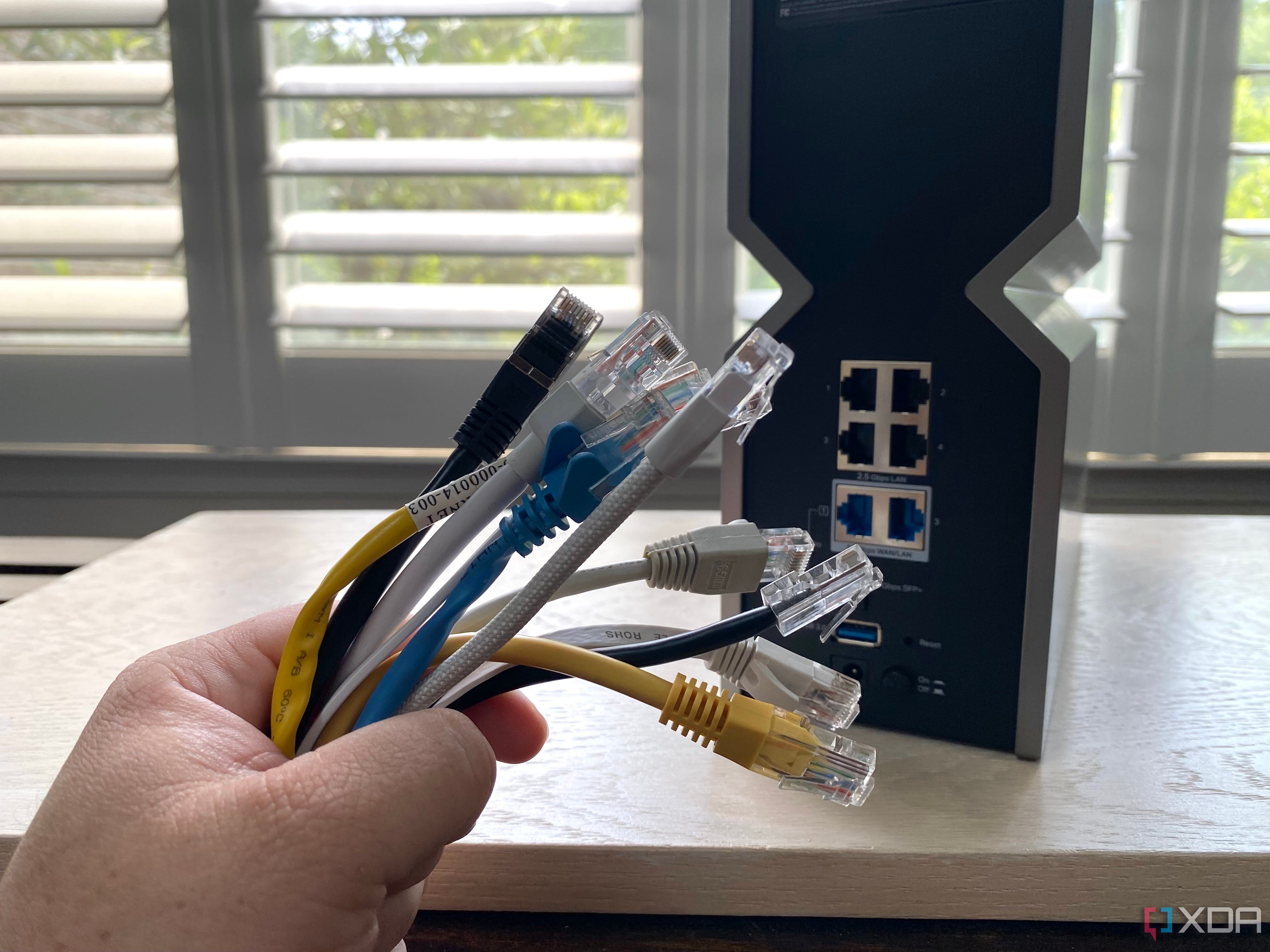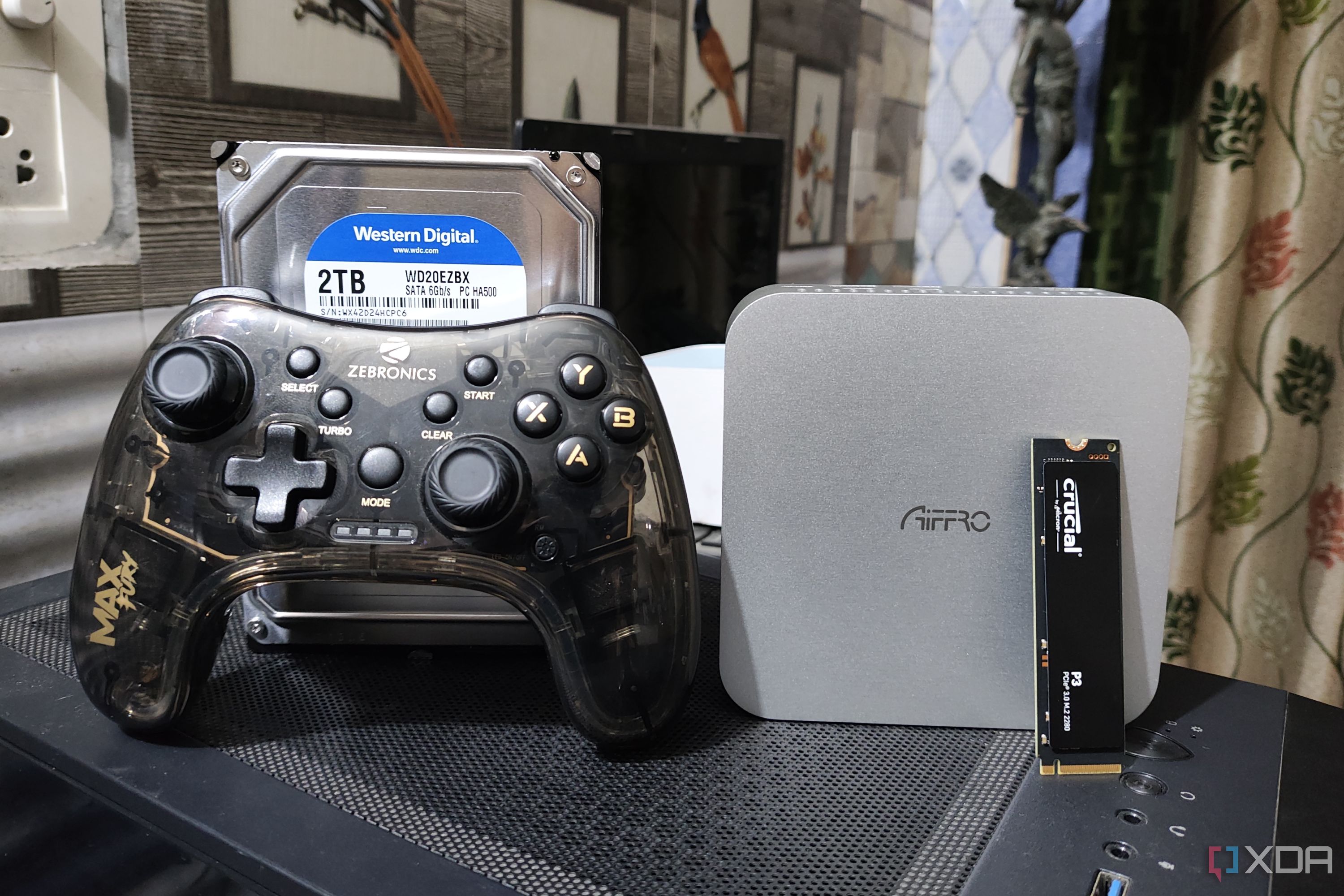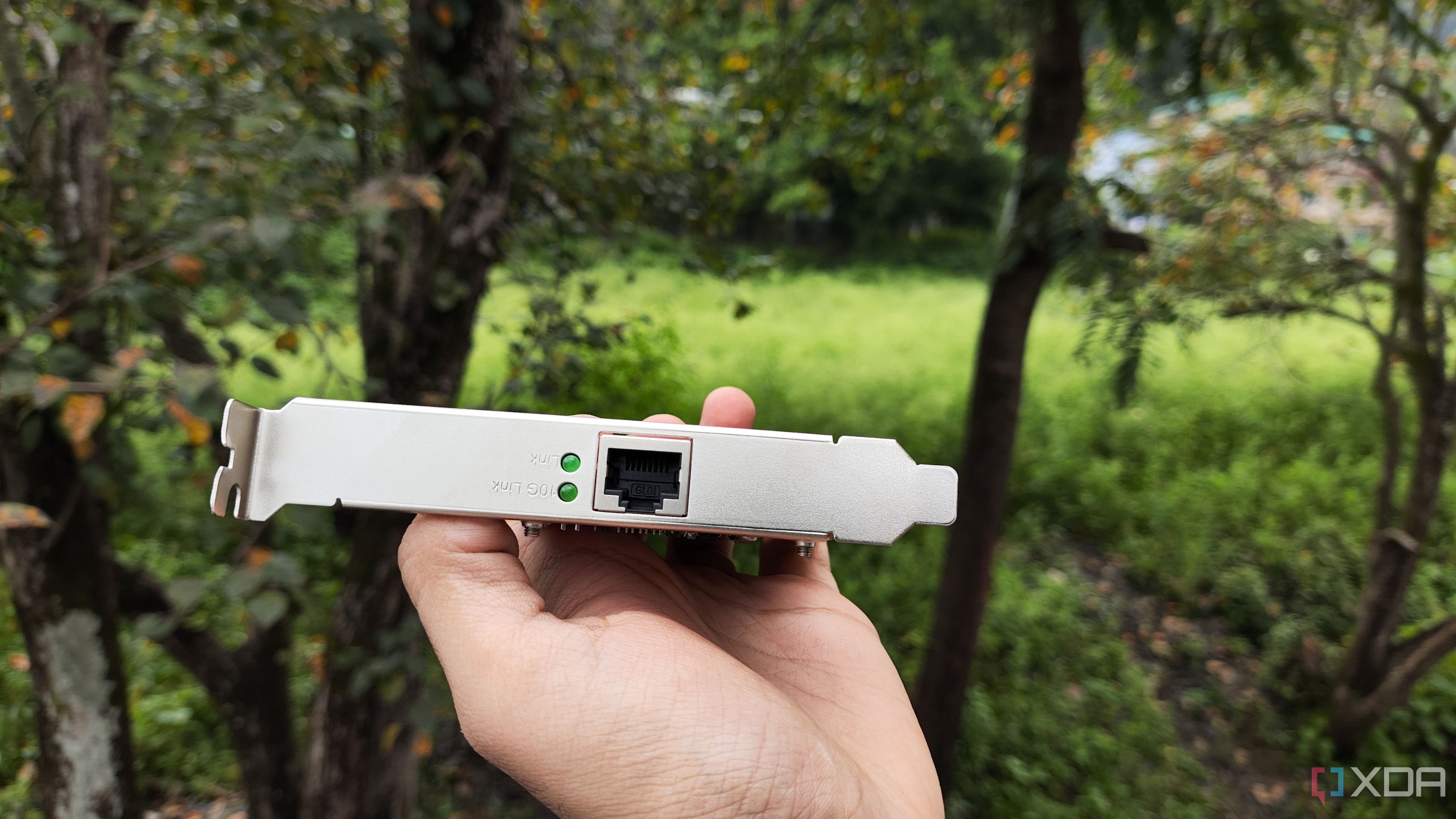Network cards are among the most sought-after upgrades in the home lab department, and for good reason. Not only can they add more ports for your Ethernet/Fibre channels, but you can also go for ultra-fast models that can kick your transfer speeds up a notch.
Plus, you can harness their connectivity prowess via PCIe and USB ports, making them useful for everything from server-grade rigs and old PCs to NAS units and Single-Board Computers. Having upgraded practically every major device in my home lab with a USB or PCIe NIC, here’s a list of the fun ways I put them to good use.
4 Setting up link aggregation
To increase the overall bandwidth of my NAS units

Let me preface this section by adding that link aggregation is not a way to double the transfer speeds of my storage servers. Nor does it increase the bandwidth of a single port on my NAS. In technical terms, setting up link aggregation lets my storage server group the mobo and NIC’s physical connections into a single logical unit. What this does is increase the overall bandwidth of the server, rather than upping the amount of data that can be sent across a single port.
Think of it this way: Adding a 10 GbE NIC alongside the built-in 10 Gigabit port on the motherboard won’t let a single port transfer data at 20 GbE speeds. Instead, it increases the server’s total available bandwidth. So, if I’ve got two devices (each featuring 10 GbE Ethernet capabilities) attempting to back up small files over the same port, this could result in congestion. Link aggregation can remove the bottleneck (or at least, mitigate it to some extent). Since I’ve got multiple devices backing up the essential data for my household, link aggregation comes in really handy.
Plus, I can spend nights away from my home lab without worrying about my scheduled backups failing if a single port ascends to tech heaven (which isn't out of the realm of possibility for enterprise hardware that has seen a lot of use). I’ll admit that the vast majority of casual users won’t ever need to set up link aggregation, but it’s still a neat feature to have when you’ve got as many devices in your home lab as I do.
It just refuses to work with built-in Ethernet adapters
ESXi’s free license is back… and so are the hardware compatibility issues associated with the hypervisor. None of the devices in my home lab – barring the ZimaBoard 2 and its Intel Ethernet controllers – were able to run ESXi, and this includes a full-fledged Xeon rig!
While I’m far from an ESXi enthusiast, it’s undoubtedly an essential platform for folks seeking a career in the DevOps and sysadmin fields. So, if you’ve got Intel-based network cards, you may not have to suffer the same fate as me when putting together an ESXi home lab.
2 Boosting the transfer speeds of my devices
My daily driver’s Ethernet port is capped at 2.5G speeds, which is great for most users. However, since I’ve got NVMe SSDs running on my storage servers, 2.5G acts as a huge bottleneck for their transfer speeds. While a 10 GbE connection still isn’t enough to help them spread their wings, it’s a lot faster than sending files over a 2.5 Gigabit port.
I also have this weird (borderline preposterous) setup where I store my ROM library and less frequently played Steam titles on an iSCSI share running on a separate NAS. While the latency reduction is pretty minimal, slotting a faster NIC into this NAS improves the load times considerably, especially when I’ve got SSDs allocated to the iSCSI share.

Related
I tried storing all of my Steam games on a NAS - here's how it went
The experience wasn't all that bad thanks to the amazing iSCSI protocol
1 Turning old systems into firewalls
‘Cause a single Ethernet port just won’t cut it
Leaving complex router-on-a-stick configurations aside for a moment, you’d typically want two separate Ethernet connections on a device you wish to use as a router: one that plugs into your network, and the other that connects to the WAN port on your router. Unfortunately, most of the mini-PCs, SBCs, and full-tower rigs in my home lab feature a single Ethernet port, and configuring VLANs for a single-port firewall setup can add some extra complexity to the setup.
Luckily, most network cards barely cost a couple of dollars. So long as I perform due research on their drivers, they tend to run pretty well as dedicated pfSense, OPNsense, and OpenWRT routers.
Not everybody needs some extra network cards

Once again, network cards are a neat investment if you’re a hardcore tinkerer, NAS lover, or home lab enthusiast. As much as I hate to admit it, the 1 Gigabit port you’ll find on most consumer motherboards and pre-built systems is adequate for the average user, and you should only spend your hard-earned money on dedicated NICs if your workloads require faster network speeds, extra ports, or link aggregation support.
.png)










 English (US) ·
English (US) ·